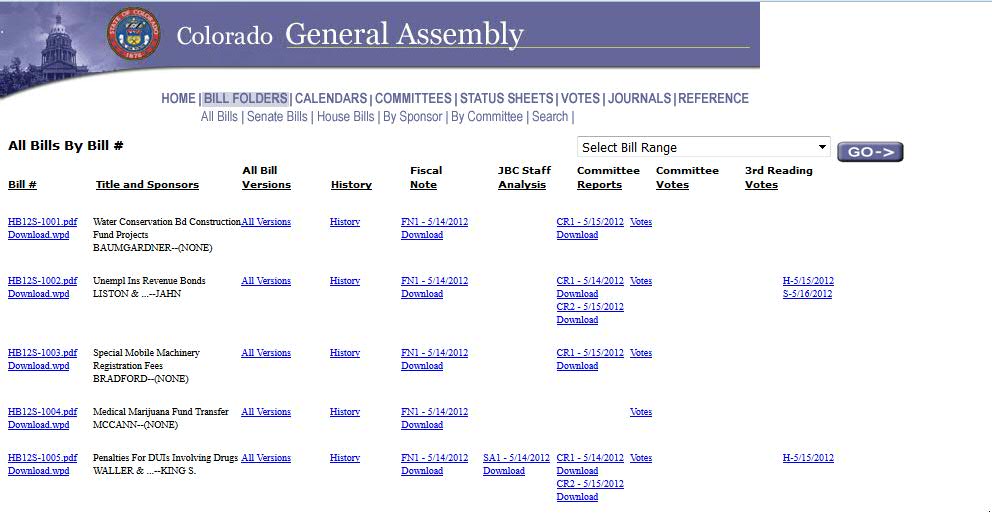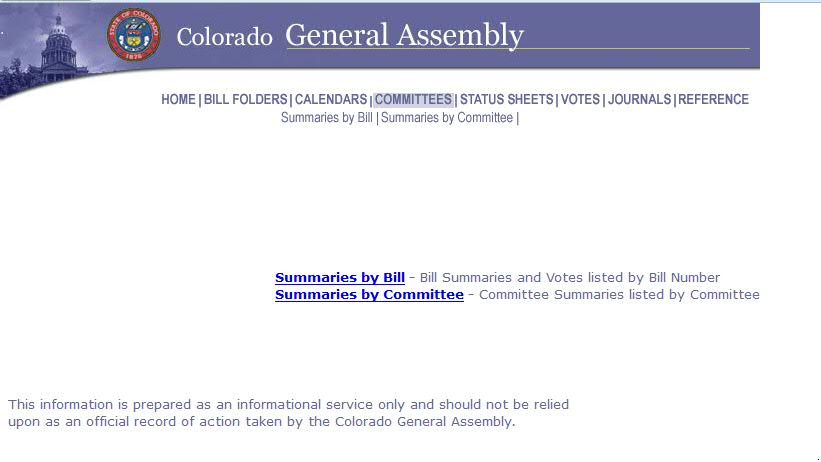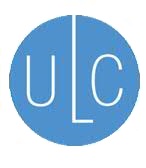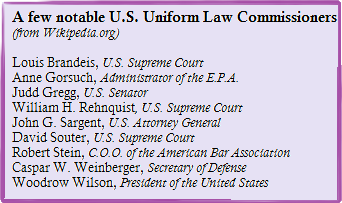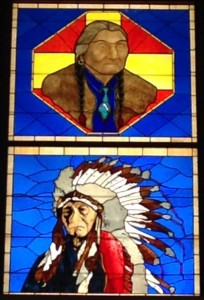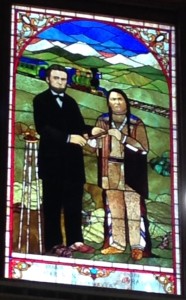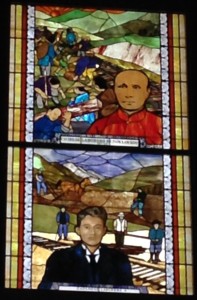This week’s article is the second in a series that summarizes the bills recommended by each of the 11 interim study committees that met this year. The Legislative Council met Tuesday, November 10, 2015, and reviewed and approved all of the recommended bills, resolutions, and memorials except one that did not require Council approval.
Interim Committee to Study Vocational Rehabilitative Services for the Blind
The Interim Committee to Study Vocational Rehabilitative Services for the Blind met six times during the 2015 interim to discuss issues related to vocational rehabilitation services for the blind. Throughout its meetings, the committee heard from various stakeholder groups, including the National Federation of the Blind of Colorado, the National Rehabilitation Association, the Colorado Center for the Blind, and A3 Colorado, as well as state agencies that administer vocational rehabilitation programs for persons who are blind. Experts in adaptive technology for the blind, employment specialists, and blind entrepreneurs also testified before the committee. Additionally, the committee received updates from the Colorado Department of Labor and Employment (CDLE) regarding the transfer of the Division of Vocational Rehabilitation (DVR) from the Department of Human Services to the CDLE pursuant to Senate Bill 15-239 and from the State Auditor’s Office regarding the audit of the DVR and progress made to date to address issues raised in the audit.
At its last meeting, the committee considered three draft bills and voted to advance two bills for consideration by the Legislative Council.
Bill A: Concerning modifications to the business enterprise program to be administered by the department of labor and employment under its authority to administer vocational rehabilitation programs. This bill expands the scope of the Business Enterprise Program, which is a program within the DVR that licenses blind vendors to operate food vending facilities on state property. The bill removes the exemption from the program for state property owned, leased, or occupied by institutions of higher education or the State Fair Authority, thereby extending the priority for blind vendors to operate vending facilities on those properties. Additionally, the bill permits the program to expand the types of businesses for which blind vendors could be licensed to operate on state properties so that blind vendors would not be limited to operating only cafeterias, cafes, and other food-related businesses. The prime sponsors of the bill are Representative Primavera and Senator Lundberg.
Bill B: Concerning the creation of an income tax credit to incentivize the employment of persons with disabilities. This bill creates two income tax credits for taxpayers who hire a person who has a developmental disability or is blind or visually impaired and who has been receiving services from and was referred for employment by the DVR. One of the tax credits allows an employer a credit equal to a percentage of the employee’s wages during the first continuous year of employment. The second tax credit authorizes an offset against a portion of the costs the employer incurs during the first three years of employment to maintain, repair, or upgrade assistive hardware or software technology necessary to allow the qualified employee to perform the job. The prime sponsors of the bill are Representative Windholz and Senator Aguilar.
All of the bills that the committee considered are available for review on the committee’s website. For questions concerning the Interim Committee to Study Vocational Rehabilitative Services for the Blind, contact Christy Chase.
Legislative Oversight Committee Concerning the Treatment of Persons With Mental Illness in the Criminal and Juvenile Justice Systems
The Legislative Oversight Committee Concerning the Treatment of Persons With Mental Illness in the Criminal and Juvenile Justice Systems (legislative oversight committee) is a statutorily created committee that meets during the legislative session and the interim. The legislative oversight committee met three times during 2015, including during the interim. The legislative oversight committee is unique in that is has an associated advisory task force, also created in statute.
The legislative oversight committee is responsible for overseeing the advisory task force and recommending legislative changes. The advisory task force is directed to examine the identification, diagnosis, and treatment of persons with mental illness who are involved in the criminal and juvenile justice systems, including the examination of liability, safety, and cost as they relate to these issues. The advisory task force met monthly throughout the year and reported its findings to the legislative oversight committee at those meetings.
Specifically, the advisory task force updated the legislative oversight committee on the following topics:
- Housing for a person with a mental illness after his or her release from the criminal or juvenile justice system;
- Medication consistency, delivery, and availability;
- Enhanced data collection issues related to persons with mental illness in the criminal or juvenile justice system;
- Recidivism and the correlation with mental illnesses; and
- Juvenile competency and restoration services.
The legislative oversight committee requested four bills for drafting. One bill was withdrawn before consideration. Of the remaining three bills, the legislative oversight committee recommended only one to the Legislative Council.
Bill A: Concerning including a mental health professional in the memorandum of understanding relating to a local-level collaborative management process for children and families. This bill requires that a mental health professional be included in the memorandum of understanding created by a group seeking to create a collaborative management system of local-level interagency oversight that coordinates and manages the provision of services to children and families. The prime sponsors of the bill are Senators Newell and Martinez Humenik and Representative Lee.
All of the bills that the legislative oversight committee considered are available for review on the committee’s website. For questions concerning the Legislative Oversight Committee Concerning the Treatment of Persons With Mental Illness in the Criminal and Juvenile Justice Systems, contact Jane Ritter.
The Profiling – Initiated Contacts by Law Enforcement Interim Committee
The Profiling – Initiated Contacts by Law Enforcement Interim Committee met five times during the 2015 interim. The committee focused its attention on the data collection that currently occurs in the state and how data collection works in other states. The committee heard from various law enforcement agencies in the state, the Colorado State Patrol, and the Department of Revenue regarding current practices related to data collection for police stops and contacts. The National Conference of State Legislatures provided a report on racial profiling laws and data collection requirements in other states. Dr. Lonnie Schaible, Assistant Professor with the University of Colorado Denver, provided an overview of racial profiling research and methodological concerns. Mr. Jeffrey Zuback, Research Chief for Maryland Governor’s Office of Crime Control and Prevention, testified concerning Maryland’s data collection processes. The Greenwood Village police department provided an overview of its e-ticketing system.
The committee requested three bills for drafting, only one of which was recommended to the Legislative Council for approval.
Bill A (Bill 2): Concerning providing the opportunity to collect identifying information from applicants for state-issued cards. This bill requires that an application for a driver’s license or state identification card include the opportunity for the applicant to self-identify his or her race or ethnicity. The race or ethnicity information will not be printed on the driver’s license or identification card but will be included in the information on the stored information magnetic strip on the card. A law enforcement officer will be able to access the information when he or she swipes or scans the driver’s license or identification card. The prime sponsors of the bill are Representative Salazar and Senators Ulibarri and Roberts.
All of the bills that the committee considered are available for review on the committee’s website. For questions concerning the Profiling – Initiated Contacts by Law Enforcement Interim Committee, contact Michael Dohr.
Transportation Legislation Review Committee
During the 2015 legislative interim, the Transportation Legislation Review Committee (TLRC):
- Met at the State Capitol in Denver four times;
- Went on site visits in the Denver metro area to the large Interstate-70 East highway improvement project and Lockheed Martin’s Autonomous Systems facility in Littleton;
- Toured Southwest Colorado, conducting field hearings in Alamosa, Durango, and Montrose; and
- Recommended five bills for introduction during the 2016 legislative session.
At its meetings, the TLRC heard presentations on a variety of subjects, including:
- An overview by the Colorado Department of Transportation (CDOT) of transportation infrastructure funding that noted, among other things, that in inflation-adjusted dollars, the state spent $125.70 per Coloradan on transportation infrastructure in 1991 but only $68.94 in 2015;
- Presentations on transportation infrastructure planning, contracting and intergovernmental agreements, Interstate 70 mountain corridor winter traction and congestion issues, laws on impeding traffic, traffic safety data gathering, common carrier regulation, and the definition of “motor vehicle;” and
- A presentation on nationwide transportation funding from the National Conference of State Legislatures and activity updates from regional transportation authorities and public highway authorities.
The TLRC considered seven draft bills (one was withdrawn during the drafting process) and ultimately voted to recommend five bills to the Legislative Council.
Bill A: Concerning a requirement that noncommercial motor vehicles be appropriately equipped when driving on the interstate 70 mountain corridor during winter storm conditions. This bill requires a motor vehicle that is driven in the Interstate 70 mountain corridor between Dotsero and Morrison when icy or snow-packed conditions are present to use appropriate traction equipment and imposes fines for violations. Under House Bill 15-1173, this bill does not require approval by the Legislative Council for introduction during the 2016 session. The prime sponsors of this bill are Representatives Mitsch Bush and Rankin and Senators Todd and Donovan.
Bill B: Concerning a requirement that the statewide transportation advisory committee provide advice and comments regarding transportation-related matters to both the department of transportation and the transportation commission rather than to the department only. This bill requires the State Transportation Advisory Committee to provide advice not only to CDOT, but also to the Transportation Commission. The prime sponsors of this bill are Representatives Carver and Mitsch Bush and Senator Todd.
Bill C: Concerning a requirement that the transportation legislation review committee study the transportation commission districts of the state to determine whether they should be modified. This bill requires the TLRC to study the current statutorily defined Transportation Commission districts during the 2016 legislative interim and determine whether the number and boundaries of the districts should be changed. The prime sponsor of this bill is Representative Carver.
Bill D: Concerning authorization to drive a kei vehicle on public roadways if the kei vehicle is registered with the state. This bill allows the Department of Revenue to title, register, and issue a rear license plate for a kei vehicle for operation on a road with a posted speed limit of 55 mph or less. The prime sponsors of this bill are Representative J. Becker and Senator Cooke.
Bill E: Concerning a requirement that the holder of an abandoned motor vehicle use the records of a national title search to notify persons with an interest in the motor vehicle that the vehicle has been towed and is subject to sale. This bill broadens the category of records that the Department of Revenue must include in a records search to identify the owner and any lienholder of an abandoned motor vehicle so that the tow operator can notify the appropriate persons that the vehicle has been towed and will be sold unless it is claimed. The prime sponsors of this bill are Representative Tyler and Senators Baumgardner and Todd.
All of the bills that the TLRC considered are available for review on the committee’s website. For questions concerning the Transportation Legislation Review Committee, contact Jason Gelender.
Wildfire Matters Review Committee
2015 has been, thankfully, a relatively quiet year for wildfires in Colorado. But the Wildfire Matters Review Committee (WMRC) still had plenty of work to do, convening four times during the legislative interim to receive updates, debate policy, and talk with stakeholders regarding myriad issues relating to wildfire prevention, risk mitigation, and response.
The WMRC requested six bill drafts, one resolution, and one memorial. Ultimately, the committee recommended four bills, the resolution, and the memorial to the Legislative Council.
Bill A: Concerning changing the wildfire mitigation income tax deduction to the wildfire mitigation income tax credit. This bill eliminates the wildfire mitigation income tax deduction and creates a wildfire mitigation state income tax credit, which will be available for tax years 2017 through 2019. The amount of the credit is equal to 25% of the costs a landowner incurs performing wildfire mitigation on his or her property located in the wildland-urban interface. The amount of the credit per tax year cannot exceed $2,500. Any amount above the limit can be carried forward for five years, but any remaining credit after five years is nonrefundable. The prime sponsor of this bill is Representative K. Becker.
Bill B: Concerning increased authority to use broadcast burning as a tool to promote watershed restoration. This bill adds broadcast burning to the types of projects and methods for which the Colorado State Forest Service may award grants from the Healthy Forests and Vibrant Communities Cash Fund and the Forest Restoration Program Cash Fund. The prime sponsors of this bill are Representative K. Becker and Senators Jones and Roberts.
Bill C: Concerning increased authority to use broadcast burning as an optional tool to reduce wildfire risk, and, in connection therewith, providing additional funding for wildfire risk reduction efforts. This bill adds broadcast burning to the types of projects and methods for which the Department of Natural Resources may award grants from the Wildfire Risk Reduction Fund. The bill also authorizes the transfer of a total of $3 million into the cash fund: $1.5 million from the General Fund and $1.5 million from the Severance Tax Operational Fund. The prime sponsors of the bill are Senators Roberts and Jones and Representative K. Becker.
Bill D: Concerning auxiliary emergency communications in the state, and, in connection therewith, establishing the auxiliary emergency communications unit in the office of emergency management in the department of public safety. This bill creates the Auxiliary Emergency Communications Unit (unit) in the Office of Emergency Management in the Division of Homeland Security and Emergency Management in the Department of Public Safety (DPS). The unit has the power to establish programs for training and credentialing auxiliary emergency or disaster communicators across the state; assume all the duties and responsibilities of the Radio Amateur Civil Emergency Service (RACES); and ensure that auxiliary emergency communicators are authorized volunteers entitled to the appropriate protections and benefits of emergency volunteers when assisting local governments with the maintenance or demolition of communication facilities. With this authority, the DPS may develop and issue photo identification cards to auxiliary communicators, conduct criminal background checks, and reimburse emergency communicators for necessary travel and other expenses incurred in performing their duties. Finally, the bill increases from 23 to 24 the number of members serving on the Public Safety Communications Subcommittee of the Homeland Security and All-Hazards Senior Advisory Committee in the DPS. The additional member is the section emergency coordinator for the Amateur Radio Emergency Service of the Colorado section of the Amateur Radio Relay League. The prime sponsor of the bill is Representative Singer.
Resolution A: Concerning the recognition of Colorado firefighters killed in the line of duty. This resolution honors and recognizes firefighters that have been killed in the line of duty. The prime sponsors of the resolution are Senators Baumgardner and Merrifield and Representatives Hamner and Thurlow.
Memorial B: Concerning the need for Congress to fund catastrophic wildfire response costs outside of federal forest management agencies’ normal budgets. This memorial requests that Congress fund the costs for catastrophic wildfire response outside the normal budgets for federal forest management agencies. In an unusual procedural move, this measure is identical to legislation (Memorial B) approved and recommended by the 2015 interim Water Resources Review Committee. This reflects the fact that the subject matter significantly affects water- and wildfire-related issues, and expresses the will that the memorial be jointly carried by both interim committees. The prime sponsors of this memorial are Senators Jones and Roberts and Representatives Coram and Vigil.
All of the legislation that the WMRC considered is available for review on the committee’s website. For questions concerning the Wildfire Matters Review Committee, contact Kate Meyer.


